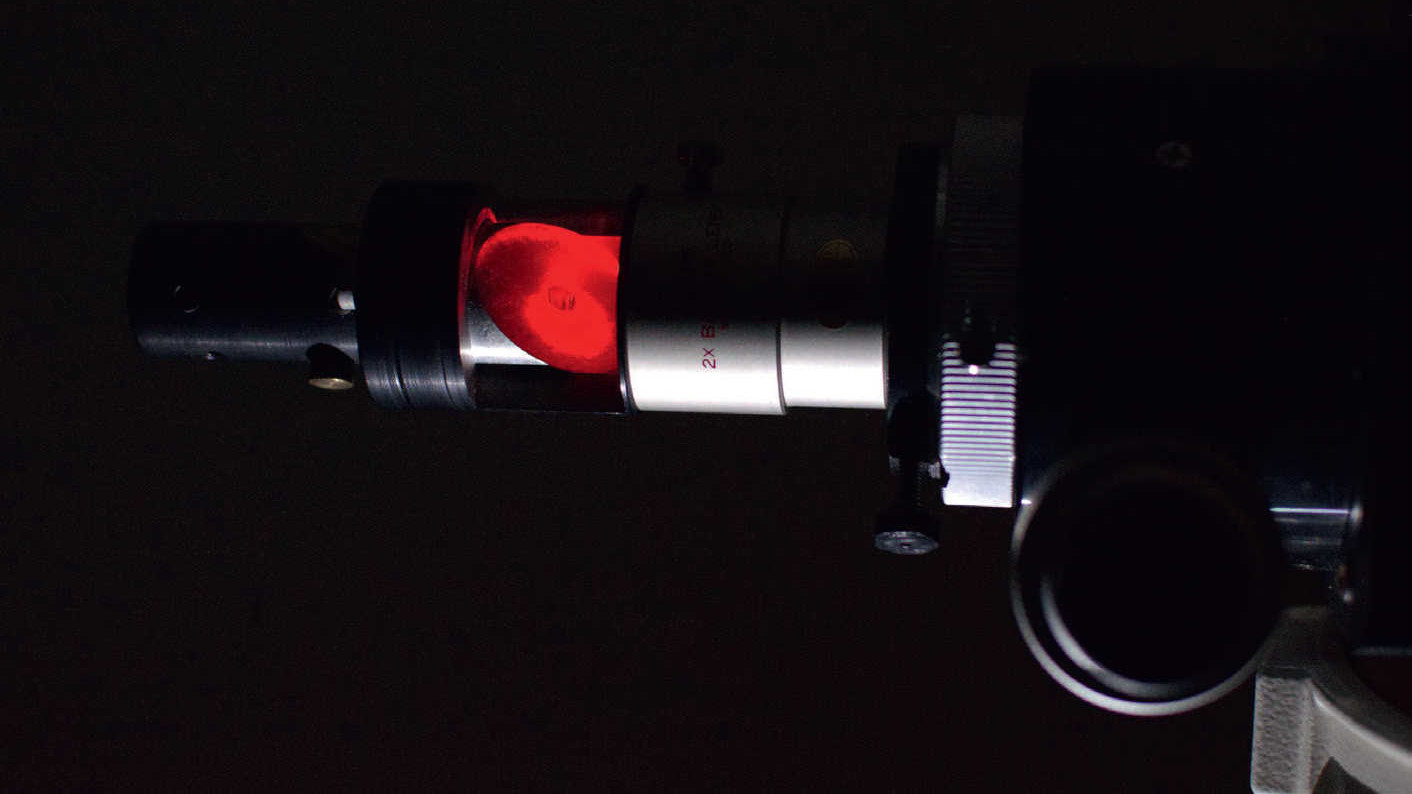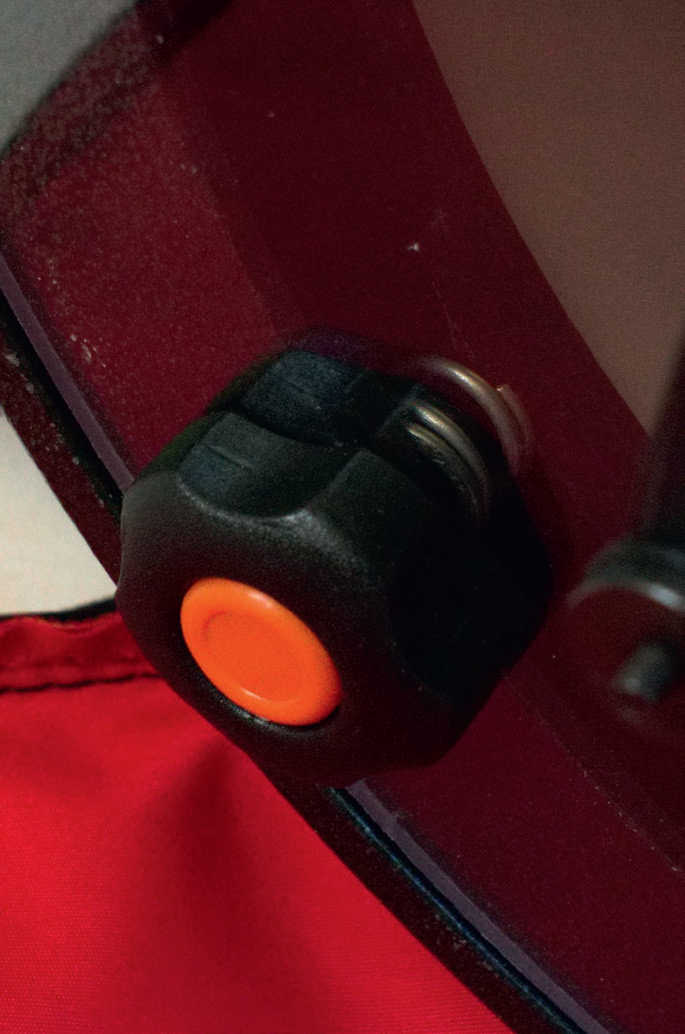Alignment – the techniques
There is more than one method of adjusting mirror optics. Directly with a star, using a laser, or with a Barlowed laser – an overview.
 The shadow of the centre marking – still off-centre here – is aligned symmetrically with the centre hole of the screen using a Barlowed laser. S. Wienstein
The shadow of the centre marking – still off-centre here – is aligned symmetrically with the centre hole of the screen using a Barlowed laser. S. WiensteinIn the last article we looked at which components could be adjusted, now we turn our attention to alignment techniques and alignment aids.
Alignment using a star comes almost directly from practice. A target star that is not too bright and not too dark, in the case of telescopes without tracking the almost stationary Polaris is a good choice, is slightly defocused at high magnification. You should be able to see ring-shaped diffraction patterns. The star must be held exactly in the centre of the image. Next, use coarse adjustment to get the rings concentric then, with fine adjustment, aim to ensure that the first diffraction ring is illuminated as evenly as possible. The star appears to move as you make the adjustments, as the viewing direction of the telescope changes slightly. therefore, you will need to keep bringing it back to the centre of the image. This last step is very sensitive and is often made more difficult by air turbulence. If this is the case, you will need to estimate whether the flickering ring flickers evenly in all directions. Localised air turbulence can also disrupt when aligning using an artificial star indoors or in the garden.
Indirect alignment using a laser
Whereas the result is directly visible when aligning using a star, alignment with a laser is carried out indirectly. The aim of this technique is to adjust the course of the optical axis using the laser beam. However, this depends on cleanly applied centre markings and works best for mirror optics, and in Cassegrain variants only for adjusting the section between the secondary mirror and the focuser. Correctors such as the meniscus-type corrector found on Mak Newtonian or Mak Cassegrain telescopes cannot be aligned by this method alone.
The aim of laser alignment is to check the correct alignment of the optical elements by reflecting the laser beam back upon itself via the mirror system. However, caution should be exercised because, for example with a Newtonian, a misaligned secondary mirror can be tilted in such a way that it appears to compensate for a misaligned primary mirror. For this reason, a collimation eyepiece is used in front of the laser, which ensures the geometrically correct alignment of the optical surfaces. The collimation eyepiece makes use of the fact that the human eye is very good at detecting concentric circles and their deviations. An even slightly misaligned secondary mirror is immediately detected as an ellipse thanks to the circular markings on the collimation eyepiece’s projection disc. Just by centring the secondary and primary mirror onto the centre of the collimation eyepiece, you can usually achieve more than with a rough alignment alone.
Widened laser beam
 Spring action forces the mirror cell to follow the adjusting screws in both directions. S. Wienstein
Spring action forces the mirror cell to follow the adjusting screws in both directions. S. WiensteinIn contrast, alignment using a Barlowed laser is another direct alignment method, primarily for Newtonians. Here, the laser beam is widened and illuminates the centre of the primary mirror. The primary mirror then creates an image on the laser's screen that is similar to that of an extremely defocused star. In this, the centre marking, usually a stuck-on hole reinforcement, becomes visible as a ring-shaped shadow. If the centre mark is stuck in the correct position, then the optical axis is perfectly aligned. However, a misaligned secondary mirror means that the best image field illumination lies off the optical axis, i.e. close to the focuser. Here too, the collimation eyepiece helps for coarse adjustment.
A very special alignment technique is one using reflection. This technique uses three bright LEDs to generate reflections from each optical surface. The curvature of the optical surfaces means that the reflections are differently blurred, but this makes it possible to distinguish them from one another and align the reflections from each of the three surfaces with one another, within a concentric circle. In many cases, this can even be used to align lenses or large correctors.
Author: Sven Wienstein / Licence: Oculum Verlag GmbH
